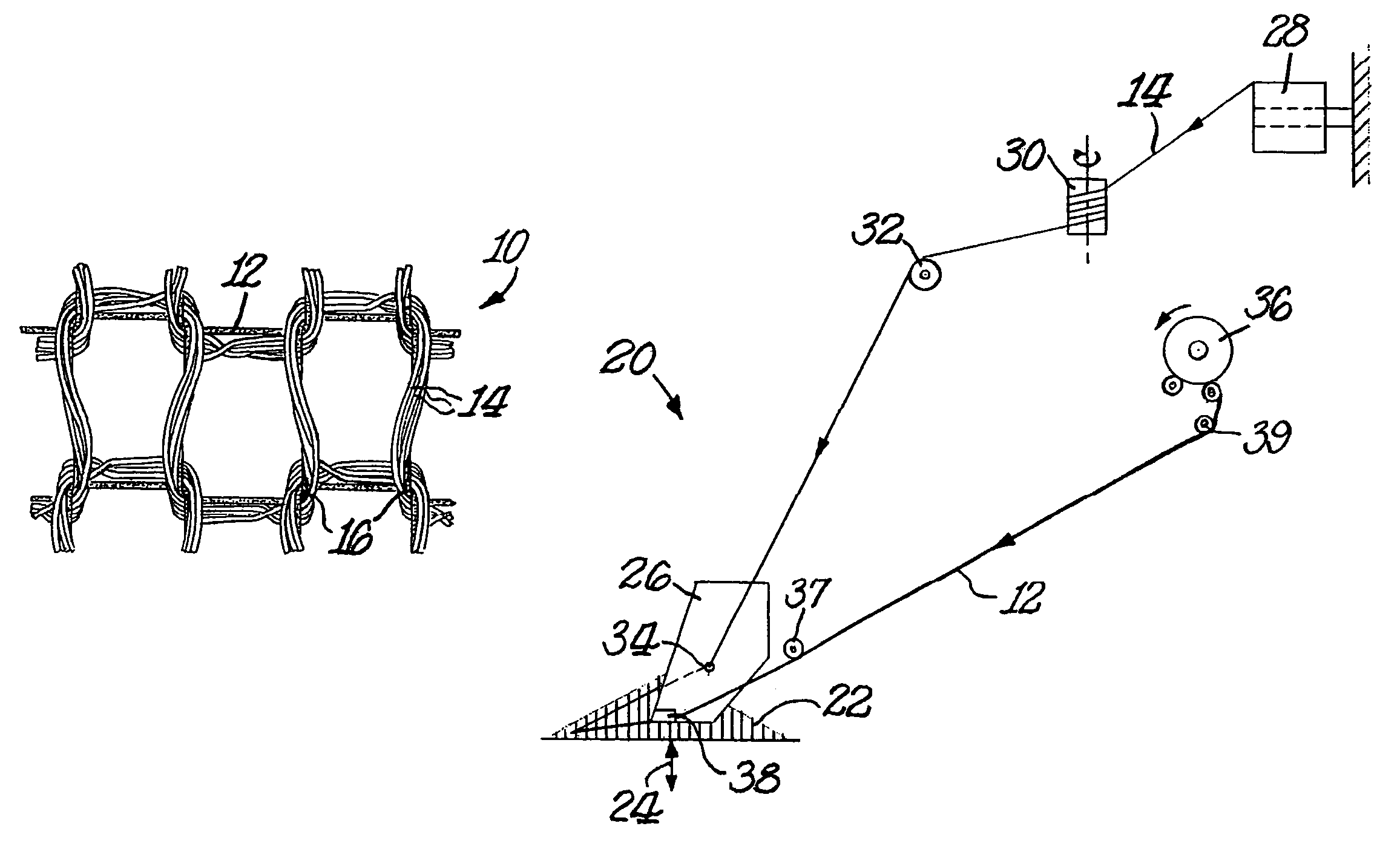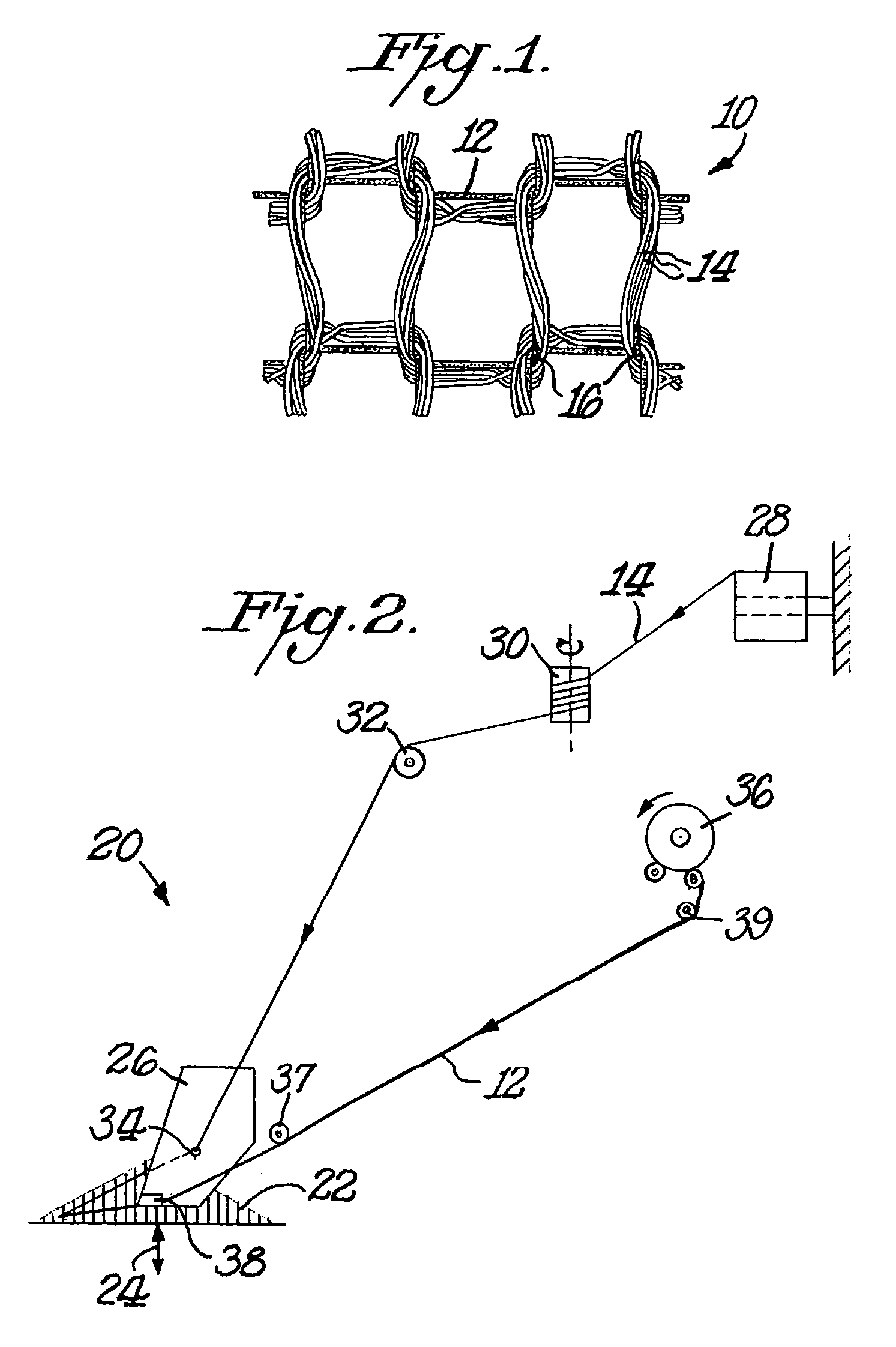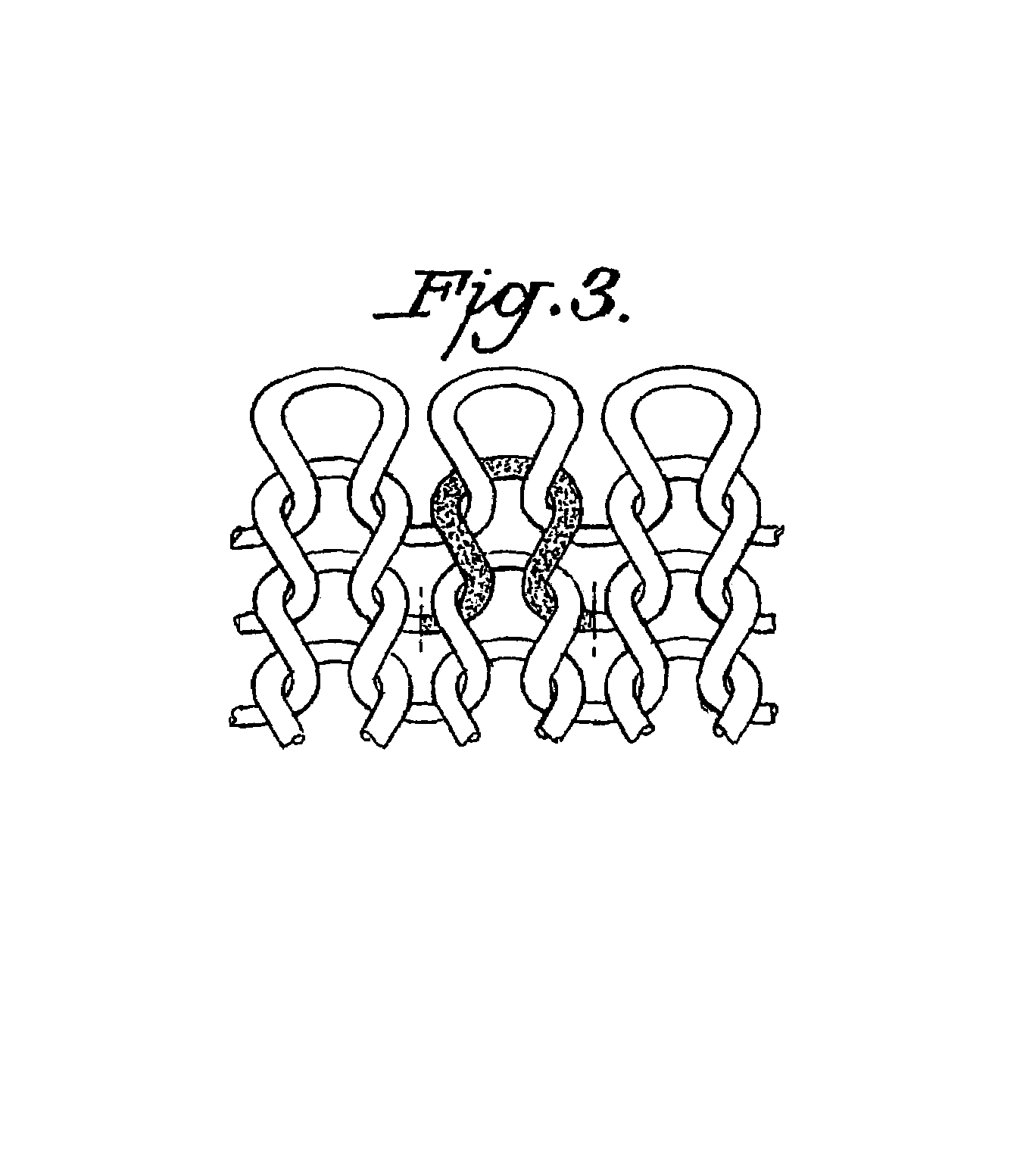Knit by design method and fabric
a knitting and design method technology, applied in knitting, ornamental textile articles, textiles and papermaking, etc., can solve the problems of limiting the total single knit fabrics may experience permanent deformation or ‘bagging’, and the general recovery force of knit stitches is not compl
- Summary
- Abstract
- Description
- Claims
- Application Information
AI Technical Summary
Benefits of technology
Problems solved by technology
Method used
Image
Examples
examples
[0116]Table 1 below sets forth the knitting conditions for the example knit fabrics. Lycra® types 162, 169, or 562 were used for the spandex feeds. Lycra® deniers were 70, 55, 40, 30, 20, and 15, or 78 dtex, 61 dtex, 44 dtex, 33 dtex, 22 dtex, and 17 dtex, respectively. The stitch length, L, was a machine setting. Table 2 below summarizes key results of the tests for finished fabrics. Table 3 summarizes data on chlorine degradation for Example 38. Values of curl were acceptable for all test conditions, and will not be further discussed below. Spandex feed tensions are listed in grams 1.00 gram equals 0.98 centiNewtons(cN).
[0117]
TABLE 1KNITTING CONDITIONSStitchMachineLycra®Lycra®Length,CoverGauge,ExampleTypeDecitexYarn TypeYarn countL in mmFactor, Cfneedles / inch 1T16944Cotton 32 Ne3.061.428 1AT16944Cotton 32 Ne3.061.428 2T16922Cotton 32 Ne3.061.428 3T16922Cotton 32 Ne3.061.428 4T16922Cotton 32 Ne2.31.8728 5T16922Cotton 32 Ne3.571.228 6T16922Cotton 40 Ne3.061.2528 7T16922Cotton 32 Ne...
examples 1-10
Example 1
[0120]The 40-denier spandex feed tension was 5 grams (4.9 cN), which is in the range of 4 to 6 cN recommended in the prior art. Because of the compressive forces of the spandex, the as-knit fabric basis weight was high (266 g / m2), and higher still in the finished fabric (306 g / m2). Shrinkage also exceeded 7% in the length direction.
example 1a
[0121]The knit fabric of Example 1 was stretched and heat set at 190° C. for 60 seconds. The as-knit weight and elongation properties were the same as or Example 1, but heat setting reduced the finished fabric to 204 g / m2 and 115% elongation. Spandex draft and content could not be measured by the analytical methods above, as the heat-set fabric could not be de-knitted because the bare spandex tacked together due to the heat-setting step. The spandex content, however, was the same as for Example 1.
PUM
| Property | Measurement | Unit |
|---|---|---|
| temperature | aaaaa | aaaaa |
| elongation | aaaaa | aaaaa |
| shrinkage | aaaaa | aaaaa |
Abstract
Description
Claims
Application Information
 Login to View More
Login to View More - R&D
- Intellectual Property
- Life Sciences
- Materials
- Tech Scout
- Unparalleled Data Quality
- Higher Quality Content
- 60% Fewer Hallucinations
Browse by: Latest US Patents, China's latest patents, Technical Efficacy Thesaurus, Application Domain, Technology Topic, Popular Technical Reports.
© 2025 PatSnap. All rights reserved.Legal|Privacy policy|Modern Slavery Act Transparency Statement|Sitemap|About US| Contact US: help@patsnap.com



